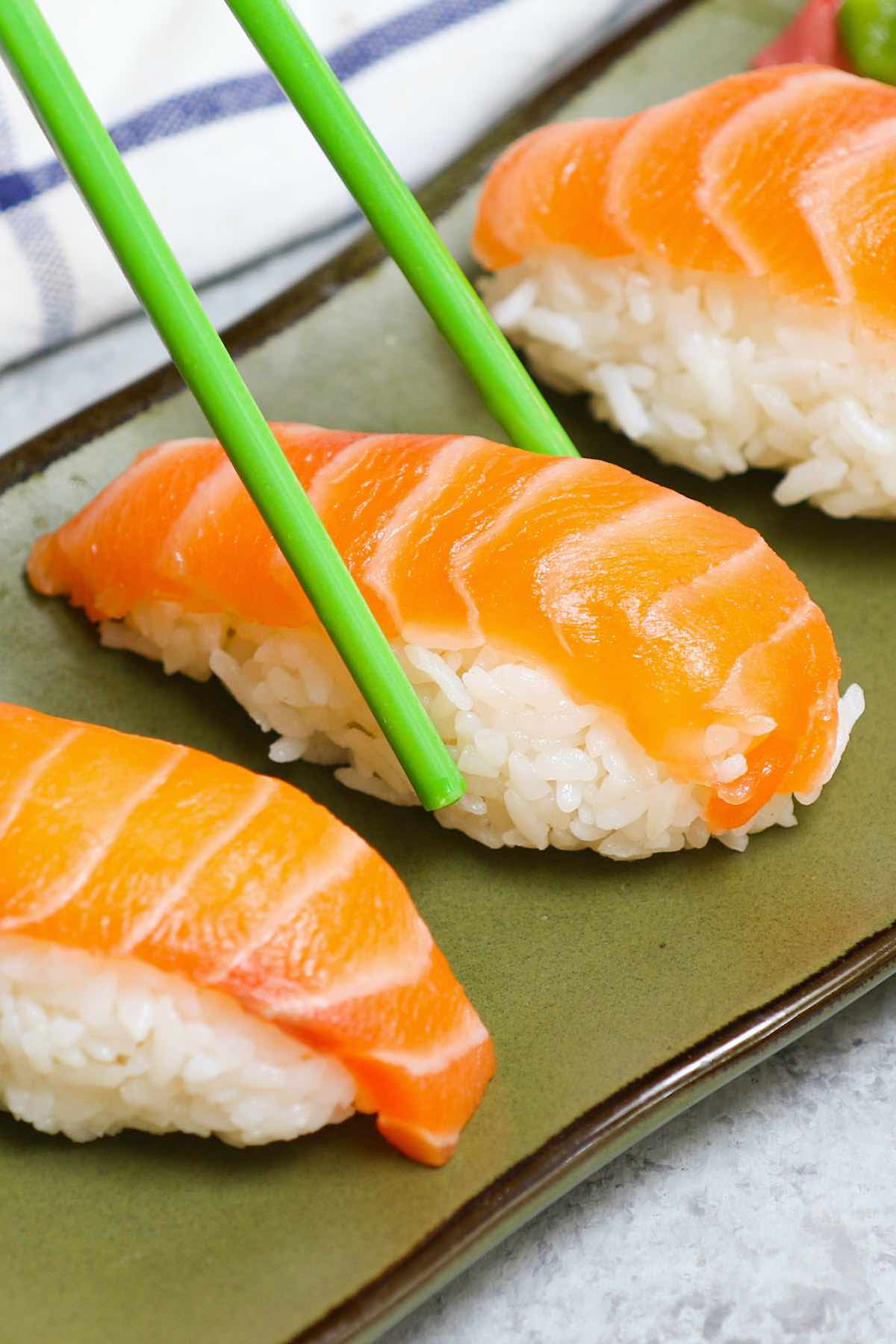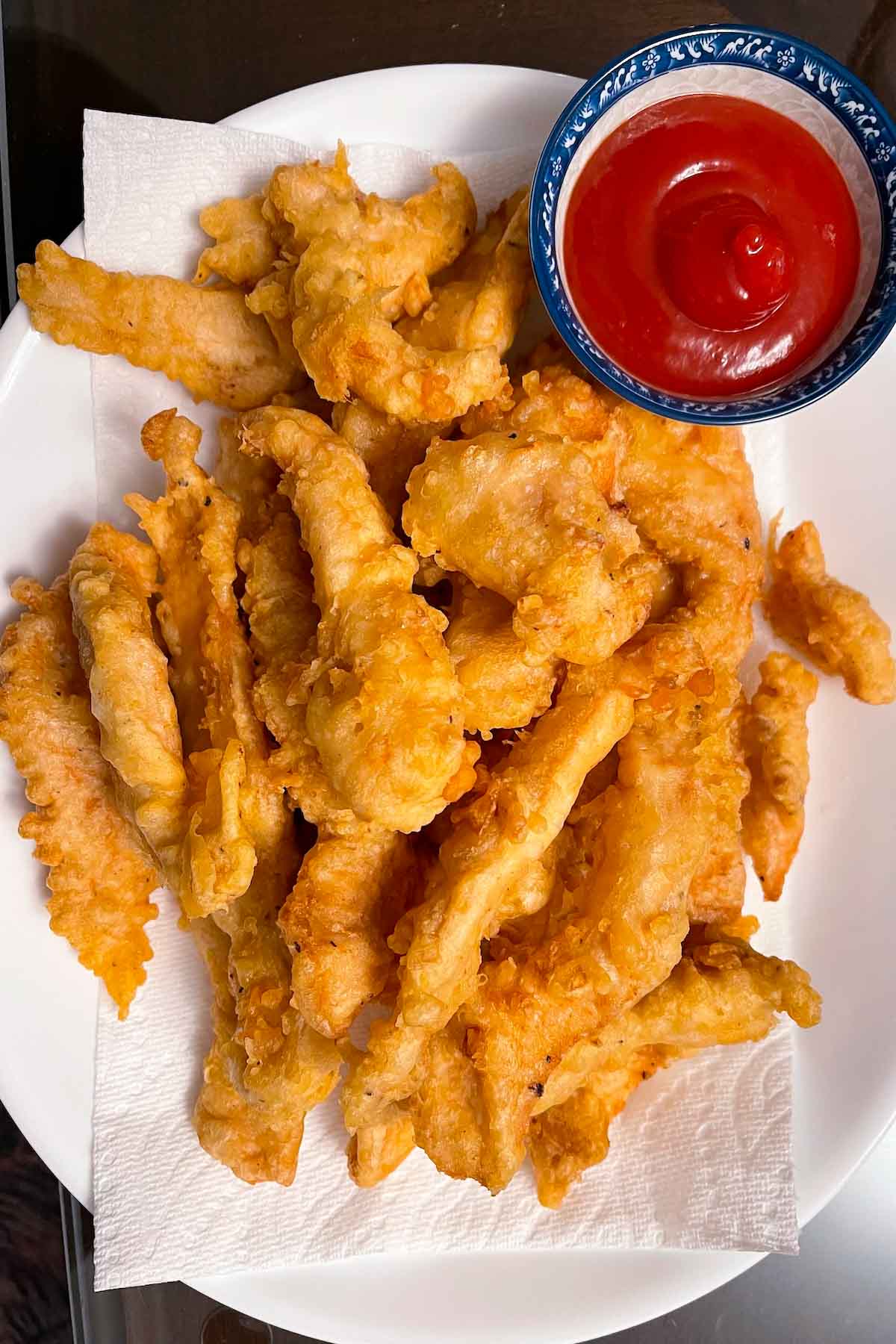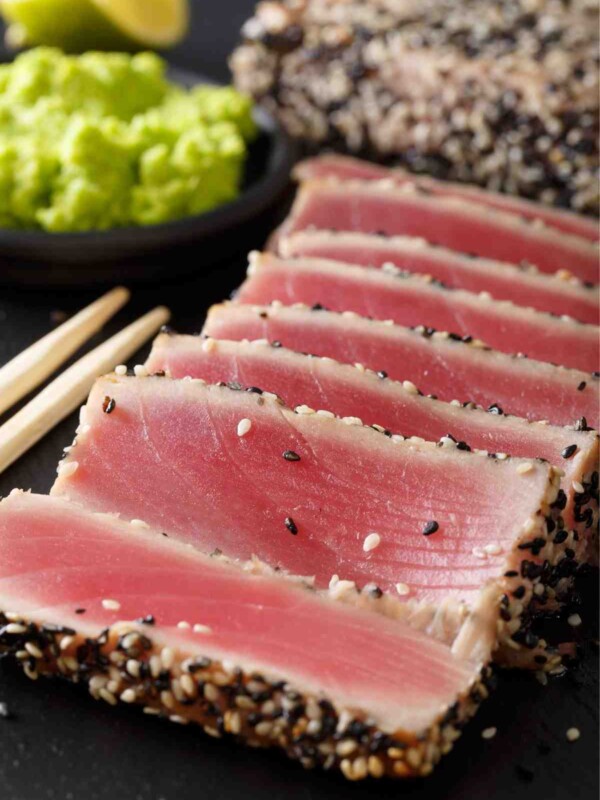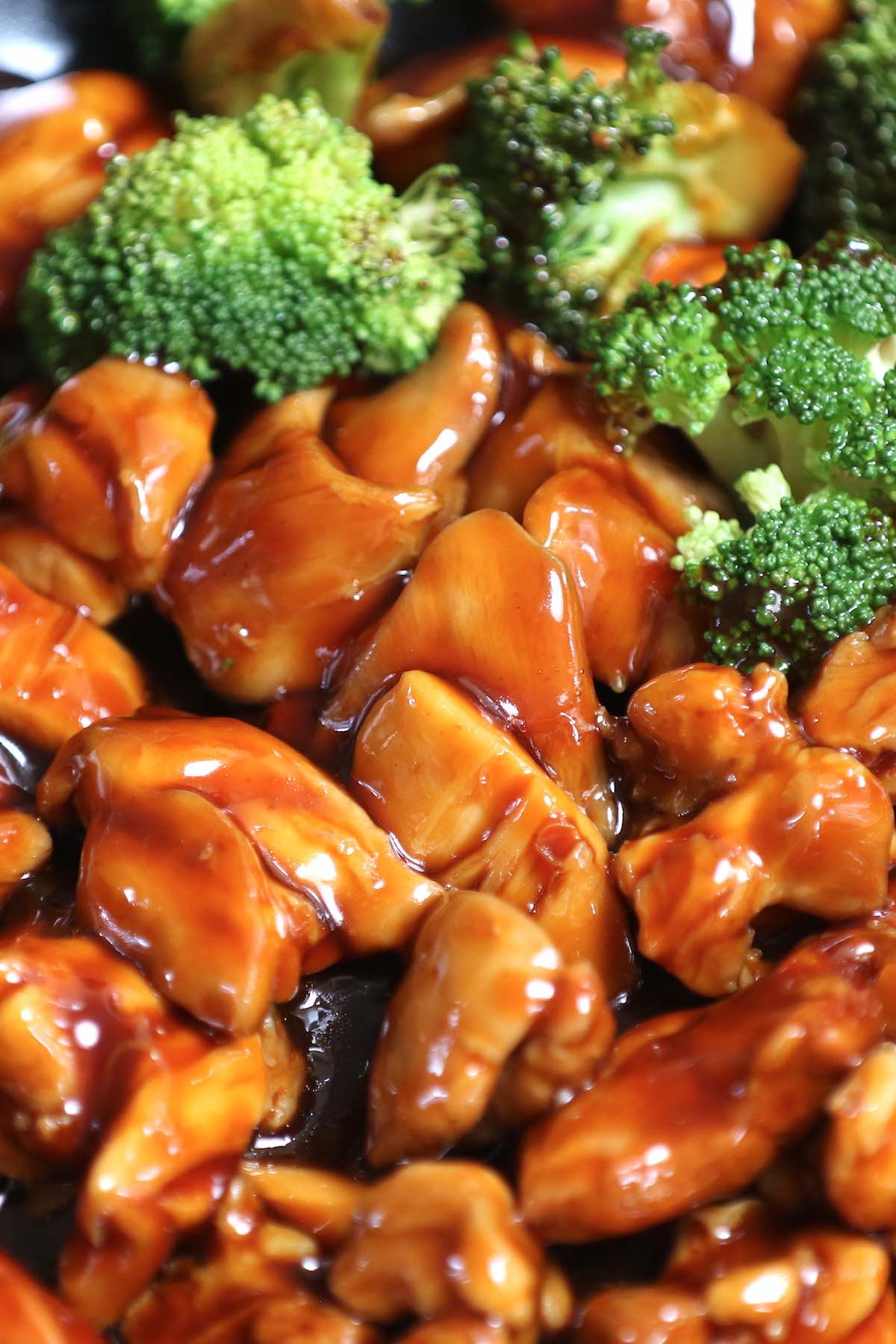What is Sushi?
on Mar 23, 2023, Updated Nov 21, 2023
This post may contain affiliate links. Please read my disclosure policy.
Considered to be one of the most popular kinds of food in the U.S., sushi has gone from exotic to the mainstream over the years. From high-end Japanese restaurants to the food court at the mall, getting your sushi fix is easier than ever.
Depending on where you’re located and the menu you’re looking at, different foods are classified as sushi. In today’s post we’ll take a closer look at the different kinds of sushi and how it’s prepared.
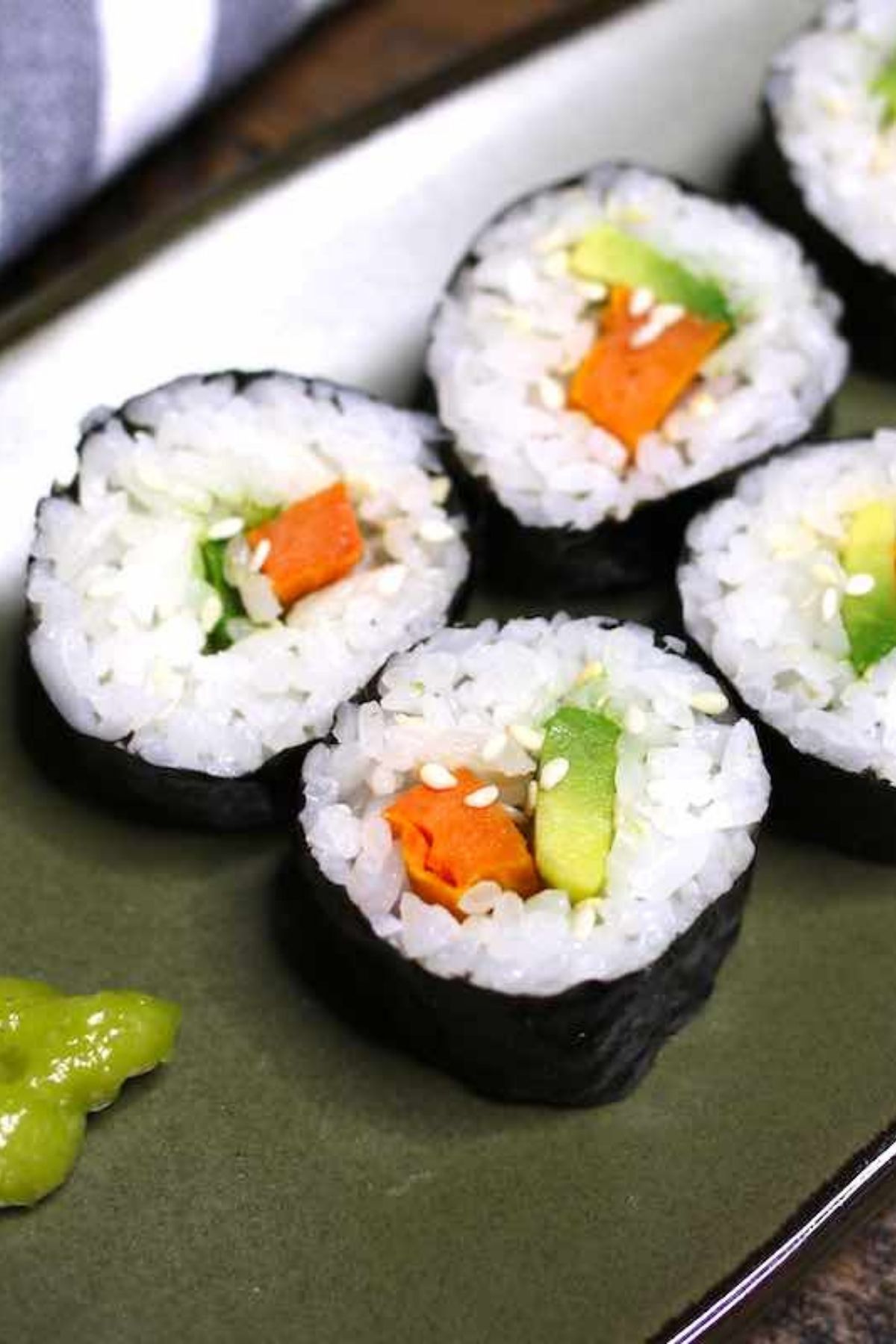
What Is Sushi?
Sushi is a dish that originated in Japan. It’s made with specially prepared rice and typically some fish or seafood, which is usually raw, but is sometimes cooked. The word sushi refers to the rice that’s used, not the fish. In fact, sushi chefs in Japan go through years of training to learn how to properly prepare the rice and safely handle the fish and seafood.
Is Sushi Actually Raw Fish?
Traditional sushi is made with raw fish, but these days you can enjoy vegetarian or vegan-friendly sushi. The raw fish must be sushi-grade, which means it’s safe to eat raw, and is carefully selected. Here is a list of some of the most common types of fish and seafood used for sushi:
- Salmon
- Tuna
- Mackerel
- Yellowtail
- Halibut
- Monkfish
- Eel
- Octopus
- Shrimp
- Squid
- Uni
Sushi Rice
Sushi rice is short or medium-grained white rice that is sticky in texture. It is specially prepared with vinegar and other seasonings such as salt and sugar.
Is Sushi Made with Seaweed?
Some popular types of sushi like maki and uramaki are made with nori, a dried form of seaweed that comes from red algae. Nori is purchased in large sheets that are toasted, and then used to wrap the raw fish and other ingredients in the rice.
Types of Sushi
There are several types of sushi, and the two most common types are nigiri and maki.
Nigiri
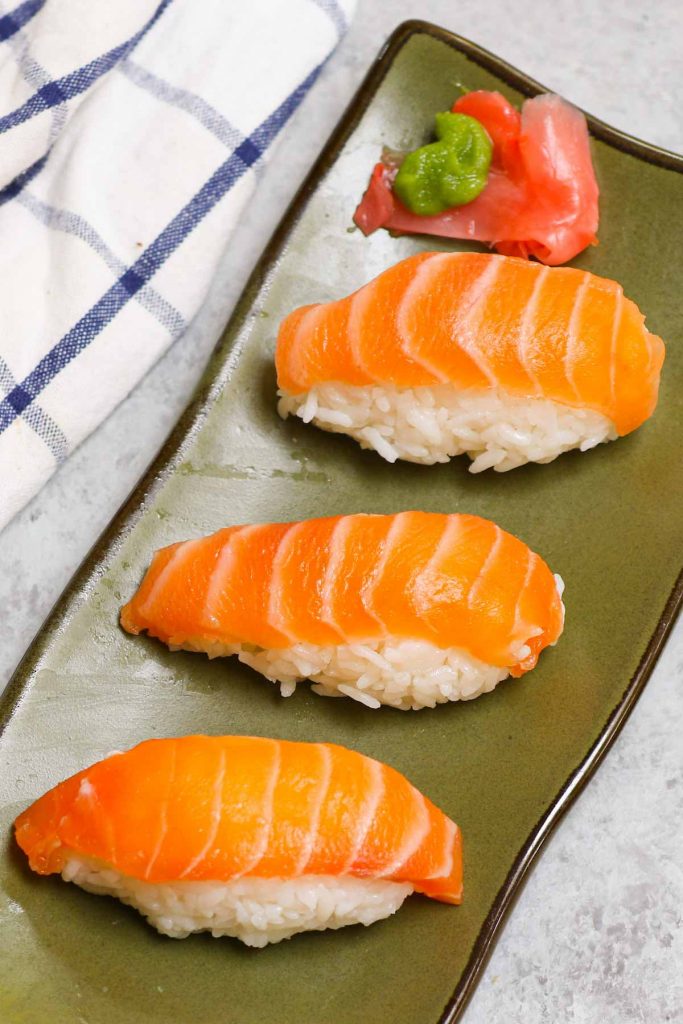
Nigiri sushi is made with an oval-shaped mound of rice with a slice of fish or seafood placed on top. The fish or seafood is typically raw, but is sometimes fermented or cooked.
Typical examples of raw fish on nigiri sushi are salmon, tuna, and yellowtail. Nigiri sushi should be eaten by hand, not with chopsticks. And if you like to dip your sushi into soy sauce, turn the nigiri over so the fish is dipped into the soy sauce, not the rice.
Maki
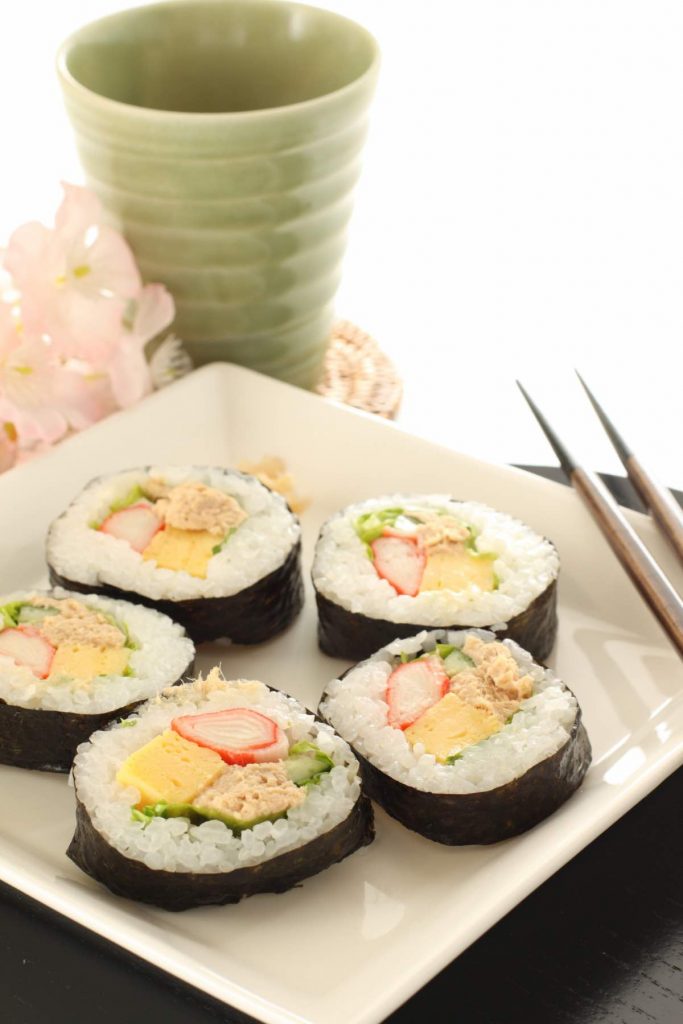
Maki is sushi that is rolled in a sheet of nori. There are several traditional types of maki. You’re probably familiar with maki-zushi which typically has raw fish, vegetables, or cream cheese rolled into the centre of the rice.
Uni Sushi
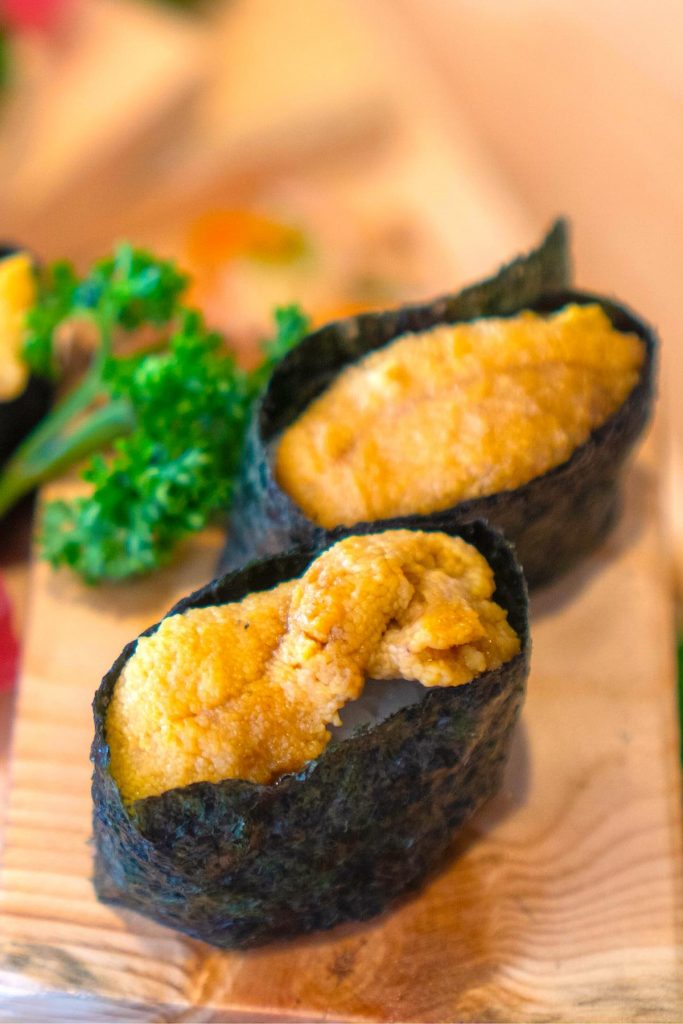
Considered to be one of the most unusual types of sushi, uni is the sex organs of sea urchins. It has a sweet flavor, a sticky consistency, and is shaped like tongues. It is considered to be a delicacy and is quite expensive.
Temaki Sushi
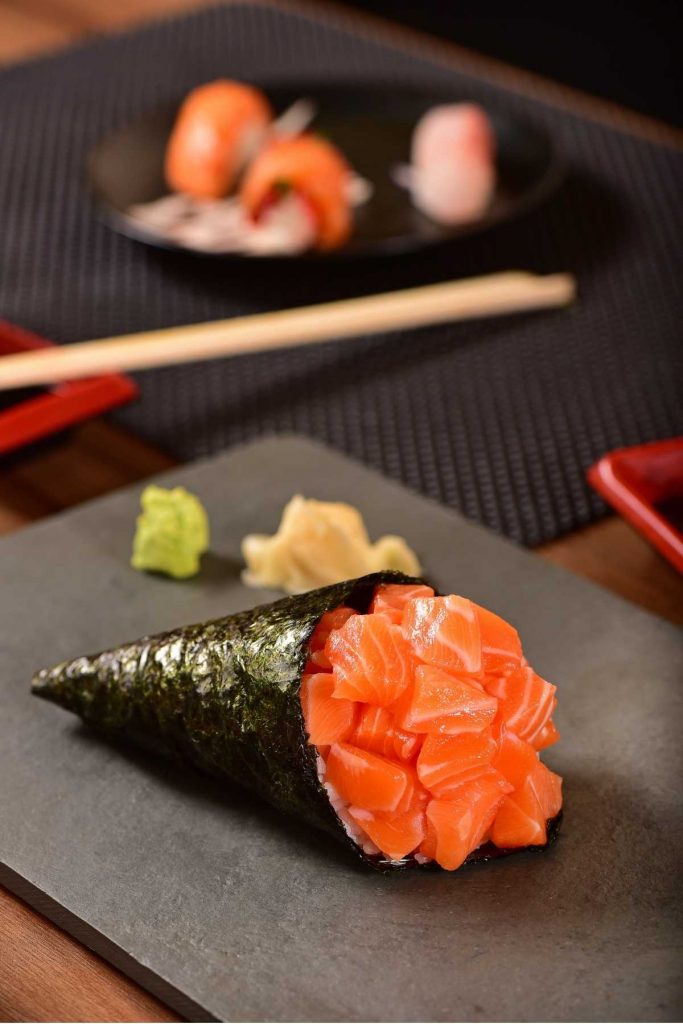
Temaki sushi, or hand rolls, are hand-held cone shaped sushi. The nori is wrapped around the rice, which is topped with the fish or seafood.
Chirashi
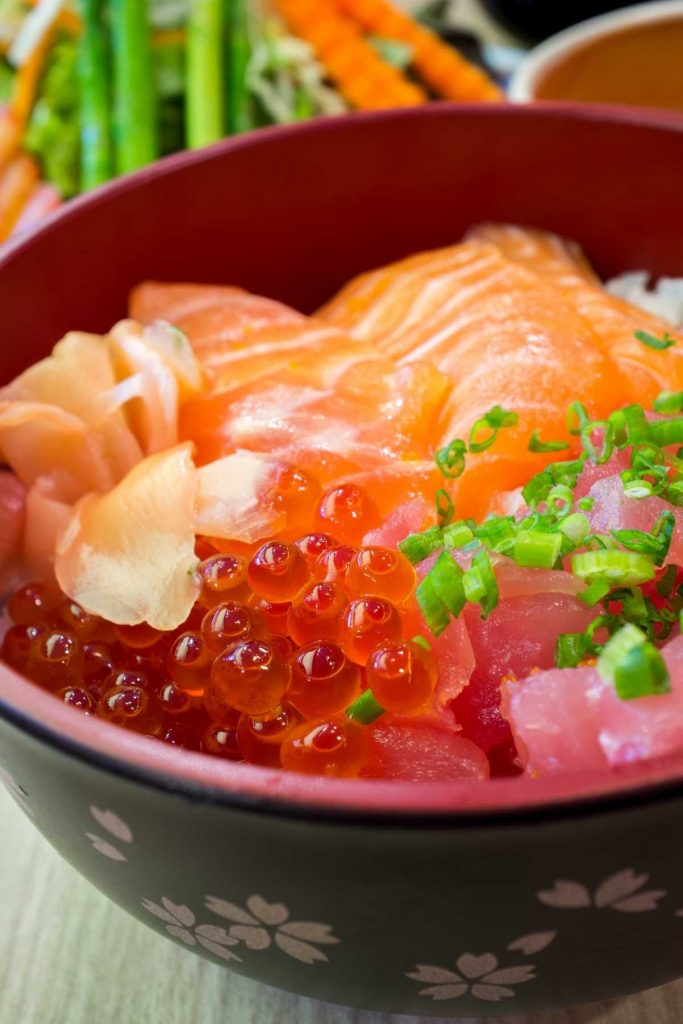
Basically a sushi bowl, the ingredients in Chirashi sushi are served deconstructed in a bowl.
Sushi vs. Sashimi
Another popular dish at Japanese restaurants is sashimi. These pieces of raw fish seasoned with soy sauce, miso, ginger, or wasabi are not sushi. Remember, the word sushi refers to rice, not fish. Because sashimi does not contain rice, it is not classified as sushi. Sashimi is meant to be eaten with chopsticks.
Nigiri vs Sushi
The word nigiri in Japanese translates to grip in English. This oval-shaped mound of rice with a slice of fish or seafood placed on top is pressed by hand, and is meant to be eaten by hand, not with chopsticks.
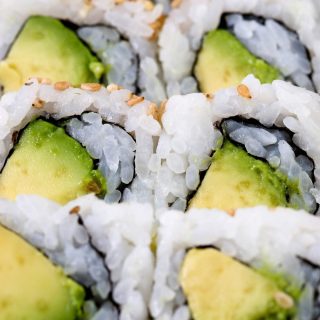
Easy Avocado Sushi Roll Recipe
Ingredients
For the Sushi Rice
- 1 cup sushi rice, uncooked short-grain sushi rice
- 1 cup water
- 1 ½ tablespoons optional sushi vinegar, or mixing 1 tablespoon rice vinegar, 1/2 tablespoon sugar
For the Avocado Roll
- 2 avocados, ripe but still firm
- 2 sheets nori, seaweed sheet
- Optional for Serving
- Sesame seeds
- Unagi sauce
- Masago
Instructions
Cook Sushi Rice
- Rinse the sushi rice and add it to the rice cooker. Add water and cook according to the instructions. (You can also cook it in a regular saucepan on the stovetop.)
- Once cooked, transfer the rice to a large bowl and let it cool down slightly. When it’s still very warm, stir in the sushi vinegar (or the mixture of rice vinegar and sugar).
Slice the Avocado
- Cut the avocado lengthwise until your knife has reached the pit.
- Gradually rotate the avocado in a straight line until your knife has reached the starting point.
- Rotate the avocado halves, twisting gently and separate the two sections.
- Place the avocado on a cutting boarding. Hold it with one hand, and then tap the back edge of a knife into the pit. Twist and then lift the pit straight up to remove.
- Peel off the skin. Then cut the avocado into thin slices lengthwise (about 1/3 inch).
Make Avocado Rolls
- Lay out the bamboo mat with a piece of plastic wrap on top. This will prevent the rice from sticking to the bamboo.
- Fold the nori sheet in half and split using a pair of scissors.
- Place half of the nori sheet on top of the bamboo mat, shining side facing down.
- Take 3/4 cup of cooked rice and spread it over the nori sheet evenly using your hands. (Dip your hands in Tezu vinegar water to prevent sticking.)
- Flip everything so that rice is facing down.
- Place 4 slices of avocado pieces on top of the nori.
- Place the thumbs underneath the bamboo mat and lift the edge up and over the filling.
- Roll the bamboo mat away from you and apply some pressure to tighten it up. Keep rolling until the ends meet.
- Remove the mat and plastic wrap. Then slice the roll into bite-size pieces. Sprinkle with optional sesame seeds. Serve and enjoy!
Nutrition information provided is an estimate only and will vary based on ingredient brands and cooking methods used.
